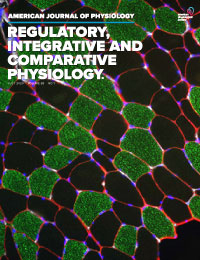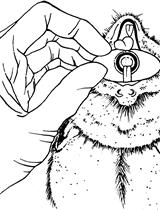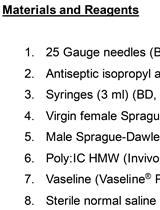- EN - English
- CN - 中文
Using the Cecal Ligation and Puncture Model of Sepsis to Induce Rats to Multiple Organ Dysfunction
采用败血症盲肠结扎穿刺模型诱导大鼠多脏器功能障碍
发布: 2021年04月05日第11卷第7期 DOI: 10.21769/BioProtoc.3979 浏览次数: 5065
评审: Chris TibbittXinyi WangAnonymous reviewer(s)

相关实验方案

在大鼠切除创面愈合模型中进行伤口愈合的形态学评估
Lígia Reis de Moura Estevão [...] Joaquim Evêncio-Neto
2019年07月05日 12149 阅读
Abstract
Sepsis is a dysregulated hyperinflammatory disease caused by infection. Sepsis leads to multiple organ dysfunction syndrome (MODS), which is associated with high rates of mortality. The cecal ligation and puncture (CLP) model has been widely used in animals and has become the gold-standard method of replicating features of sepsis in humans. Despite several studies and modified CLP protocols, there are still open questions regarding the multifactorial determinants of its reproducibility and medical significance. In our protocol, which is also aimed at mimicking the sepsis observed in clinical practice, male Wistar rats are submitted to CLP with adequate fluid resuscitation (0.15 M NaCl, 25 ml/kg BW i.p.) immediately after surgery. At 6 h after CLP, additional fluid therapy (0.15 M NaCl, 25 ml/kg BW s.c.) and antibiotic therapy with imipenem-cilastatin (single dose of 14 mg/kg BW s.c.) are administered. The timing of the fluid and antibiotic therapy correspond to the initial care given when patients are admitted to the intensive care unit. This model of sepsis provides a useful platform for simulating human sepsis and could lay the groundwork for the development of new treatments.
Keywords: Sepsis (败血症)Background
Sepsis is defined as life-threatening organ dysfunction caused by a dysregulated host response to infection (Singer et al., 2016). It is a major public health problem worldwide and is the leading cause of multiple organ dysfunction syndrome (MODS), which is associated with high in-hospital mortality (Torio and Moore, 2016; Kellum et al., 2019). When sepsis was first defined in 1991, the focus was on the systemic inflammatory response (ACCP/SCCMCC et al., 1992). Since then, studies of pro- and anti-inflammatory molecules have advanced and have begun to reveal that the host adaptive responses go beyond immunological phenomena (Singer et al., 2016). In the early or acute phase, sepsis is characterized by a hyperinflammatory host response accompanied by pro- and anti-inflammatory processes that lead to cell death by apoptosis. In the late or immunosuppressive phase, it is characterized by depletion of immune cells (Hotchkiss et al., 2013). In the early phase, many physiological systems are compromised, hemodynamic and cardiopulmonary alterations being the most clinical significant symptoms (Rello et al., 2017). Despite the use of several modern treatment strategies, including fluid and antimicrobial therapy, the mortality rates associated with sepsis remain high. Therefore, experimental animal models have been developed apace with the evolution of the knowledge of sepsis and advances in its treatment. The establishment of an animal model that replicates the features of sepsis in humans is essential for understanding the pathogenic mechanisms and for developing new treatment strategies. Various experimental rodent models have been described, including intraperitoneal or intravenous infusion of purified endotoxin (lipopolysaccharide), intravascular infusion of certain bacterial species, the abscess model, and the cecal ligation and puncture (CLP) model (Baker et al., 1983; Parker et al., 2001; Fink, 2014).
The CLP model is a polymicrobial model of bacterial peritonitis that is considered the gold-standard method of replicating features of sepsis in humans, which is easily reproducible, and can be adapted to mimic specific clinical events. It has been widely used as a research tool for more than 30 years (Wichterman et al., 1980). The use of this model produces a hyperdynamic circulatory state, mitochondrial dysfunction, and endothelial alterations, as well as having acute renal, pulmonary, and cardiac effects. It also stimulates receptor molecules present in immune cells, such as Toll-like receptors (TLRs), and cytokine production, as observed in pre-clinical studies (Rodrigues et al., 2012; Moreira et al., 2014; Cóndor et al., 2016; Capcha et al., 2020). The CLP model can be modified to produce varying degrees of severity, depending on the cecum ligation site and the number of punctures made (Singleton et al., 2003).
In our version of the CLP model, antibiotics and crystalloid solution are administered at 6 h after the procedure, in accordance with intensive care unit (ICU) guidelines for the restoration of blood volume and pressure (Singer et al., 2016). Although early recognition of sepsis is particularly important for appropriate patient management, as well as to achieve favorable outcomes, not all patients have timely access to treatment. Therefore, the time to the start of treatment in our model is intended to simulate the delay that occurs when patients have limited access to health care. In this rat model, 5-day mortality is typically 30-60%.
Here, we describe the CLP model in detail in order to disseminate the methodology, as well as to contribute to a better understanding of the mechanisms involved in the development of sepsis.
Materials and Reagents
Gauze pads (Dentalcremer)
16 G needles (Becton Dickinson, catalog number: 305198 )
21 G needles (Becton Dickinson, catalog number: 305165 )
Razor blades (no specific brand)
Liquid soap (no specific brand)
Syringes (5 ml and 10 ml)
Operator protective equipment: surgical gloves and face mask
Mononylon 3.0 suture (Ethicon, Johnson & Johnson Medical Device Companies)
Mononylon 4.0 suture (Ethicon, Johnson & Johnson Medical Device Companies)
Male Wistar rats (200-300 g), obtained from institutional animal facility
Isoflurane 100% (Cristália, Isoforine®), stored at room temperature
Imipenem-cilastatin (Merck Sharp & Dohme Corp, Tienam®), stored at 4 °C
Tramadol hydrochloride 50 mg/ml
Ketamine (BioChimico, cloridrato de cetamina), stored at room temperature
Xylazine 2% (Syntec, xilazin), stored at room temperature
Alcohol 70% (Rioquimica, rialcool 70), stored at room temperature
Sterile saline solution 0.9% wt/vol (Fresenius Medical Care Ltda)
Povidone-iodine (Rioquimica, riodeinetopico), stored at room temperature
Equipment
Surgical instruments: dissection scissors, microdissection scissors, straight surgical forceps, straight anatomical forceps, and needle holder (IncolInstrumentosCirúrgicos)
Note: Sterilize these instruments by autoclaving before use.
Baby bed warmer (Sunbeam Heating Pad, catalog number: 000756-500-000U )
Isoflurane vaporizer (Harvard Apparatus, 75-0239 INT, catalog number: 1073/216 )
Procedure
文章信息
版权信息
© 2021 The Authors; exclusive licensee Bio-protocol LLC.
如何引用
Capcha, J. M. C., Moreira, R. S., Rodrigues, C. E., Silveira, M. A. D., Andrade, L. and Gomes, S. A. (2021). Using the Cecal Ligation and Puncture Model of Sepsis to Induce Rats to Multiple Organ Dysfunction. Bio-protocol 11(7): e3979. DOI: 10.21769/BioProtoc.3979.
分类
免疫学 > 动物模型 > 大鼠
生物科学 > 生物技术
您对这篇实验方法有问题吗?
在此处发布您的问题,我们将邀请本文作者来回答。同时,我们会将您的问题发布到Bio-protocol Exchange,以便寻求社区成员的帮助。
提问指南
+ 问题描述
写下详细的问题描述,包括所有有助于他人回答您问题的信息(例如实验过程、条件和相关图像等)。
Share
Bluesky
X
Copy link










